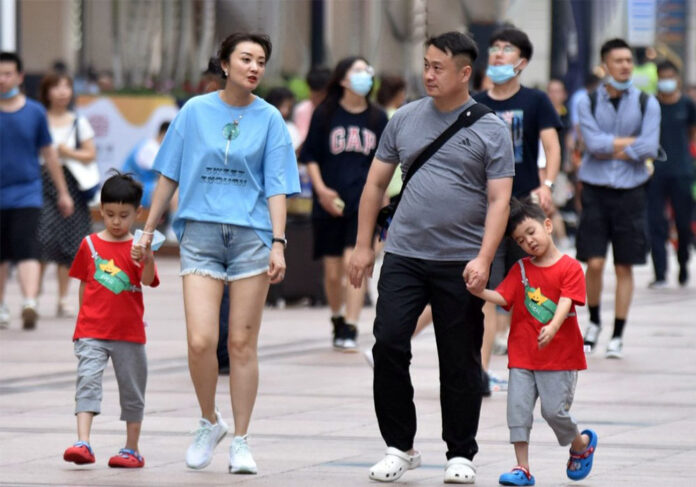(TibetanReview.net, Jan17’22) – The Communist party-state of China’s decades-long one-child policy, begun in 1980, has proved to be too successful for its own good and it now struggles in vain to boost the population’s fertility rate in order to avoid the pitfalls of a country ageing before it could become sufficiently rich. Recent efforts to boost population growth, begun in 2015, have been ineffective, with some of them being controversial as well as inviting ridicule from the targeted child-bearing age population.
The population of the Chinese mainland at the end of 2021 was 14.13 billion, a slight increase of 480,000 from the end of 2020, reported China’s official globaltimes.cn Jan 17, citing the country’s National Bureau of Statistics (NBS).
The number of newborns in the Chinese mainland dropped to 10.62 million in 2021, down from 12 million in 2020 and marking a drop for the fifth consecutive year. The number of deaths recorded in 2021 was 10.14 million, the report added.
The report cited Chinese demographers as saying the country’s population had entered a zero-growth period.
Continued decrease in number of women of childbearing age was the main reason for the decline in birth rate, the report cited Ning Jizhe, head of the NBS, as saying at Monday’s press conference, pointing out that 2021 saw about 5 million fewer women of childbearing age between 15 and 49 than in the previous year. He has cited other factors as well, including delaying marriage and births due to the fertility concept of couples and the pandemic.
The natural growth rate of China’s population, which excludes migration, was only 0.034% for 2021, the lowest since 1960, Reuters Jan 17 cited data as showing. “The demographic challenge is well known but the speed of population aging is clearly faster than expected,” it quoted Zhiwei Zhang, chief economist at Pinpoint Asset management, as saying.
“This suggests China’s total population may have reached its peak in 2021. It also indicates China’s potential growth is likely slowing faster than expected,” Zhang has said.
* * *
The decline in birth rates could undercut the ruling party’s plans to develop technology and self-sustaining economic growth based on consumer spending rather than exports and investment, noted the AP Jan 16.
The sinking of the population growth rate to another record low in 2021 has underscored the ticking demographic time bomb that could reverse China’s growth in purchasing power and production in the near future, and eroding the source of strength that has made it the world’s second-largest economy after the US, noted the asia.nikkei.com Jan 17.
Also, the fall in population growth has prompted warnings China, where economic output per person is below the global average, might face a “demographic time bomb” and have too few workers to support a growing number of elderly people, the AP report added.
China’s one-child policy was a harrowing experience to many Chinese people who had to pay fines they often could not afford, lost jobs, and faced other types of abuses that included forced abortions and sterilizations. A preference for sons led parents to kill baby girls, prompting warnings that millions of men might be unable to find a wife, and fueling social tension, the report noted.
The globaltimes.cn report cited Liang Jianzhang, an economics professor at Peking University, as saying it was “necessary, effective and important” to further encourage fertility and increase the population to improve China’s economy.
He has suggested attractive cash payments to couples having more than one child or two children as well as tax incentives to them accounting for 2 to 3 percent of China’s GDP.
The Reuters report cited Huang Wenzheng, a demography expert with the Beijing-based Center for China and Globalization, as saying birth numbers were likely to fluctuate in the 10 million range before declining further in the absence of more policy changes.
Noting that policies will provide greater support for the birth rate in the longer run, Huang has said, “Career advancements could be tied to whether you have children or not; economic incentives; or even direct cash payouts by society to meet the cost of raising a family.”
* * *
However, Du Peng, a professor at the School of Sociology and Population Studies at the Renmin University of China, has said the decline of the number of newborn babies was expected and showed the improvement of population quality, pointing out that the number of college graduates in 2022 was expected to reach 10.76 million, a record high, which will outnumber the newborn babies in 2021.
He has taken this as indication that China was developing from quantitative growth in the workforce to quality growth, which will benefit the future high-technology development of the country.






